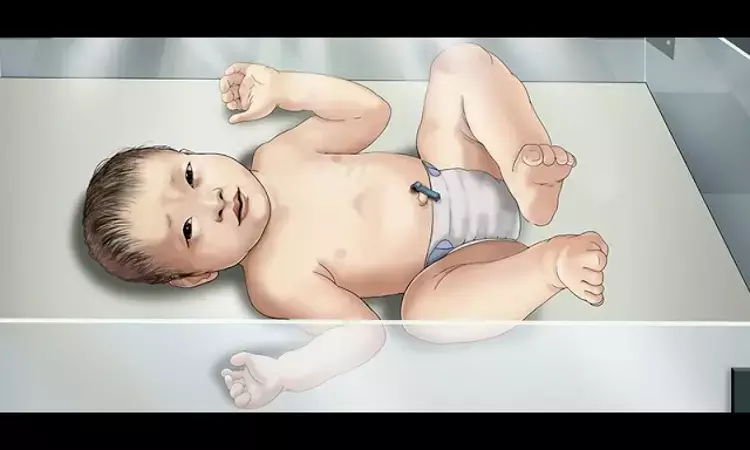- Home
- Medical news & Guidelines
- Anesthesiology
- Cardiology and CTVS
- Critical Care
- Dentistry
- Dermatology
- Diabetes and Endocrinology
- ENT
- Gastroenterology
- Medicine
- Nephrology
- Neurology
- Obstretics-Gynaecology
- Oncology
- Ophthalmology
- Orthopaedics
- Pediatrics-Neonatology
- Psychiatry
- Pulmonology
- Radiology
- Surgery
- Urology
- Laboratory Medicine
- Diet
- Nursing
- Paramedical
- Physiotherapy
- Health news
- Fact Check
- Bone Health Fact Check
- Brain Health Fact Check
- Cancer Related Fact Check
- Child Care Fact Check
- Dental and oral health fact check
- Diabetes and metabolic health fact check
- Diet and Nutrition Fact Check
- Eye and ENT Care Fact Check
- Fitness fact check
- Gut health fact check
- Heart health fact check
- Kidney health fact check
- Medical education fact check
- Men's health fact check
- Respiratory fact check
- Skin and hair care fact check
- Vaccine and Immunization fact check
- Women's health fact check
- AYUSH
- State News
- Andaman and Nicobar Islands
- Andhra Pradesh
- Arunachal Pradesh
- Assam
- Bihar
- Chandigarh
- Chattisgarh
- Dadra and Nagar Haveli
- Daman and Diu
- Delhi
- Goa
- Gujarat
- Haryana
- Himachal Pradesh
- Jammu & Kashmir
- Jharkhand
- Karnataka
- Kerala
- Ladakh
- Lakshadweep
- Madhya Pradesh
- Maharashtra
- Manipur
- Meghalaya
- Mizoram
- Nagaland
- Odisha
- Puducherry
- Punjab
- Rajasthan
- Sikkim
- Tamil Nadu
- Telangana
- Tripura
- Uttar Pradesh
- Uttrakhand
- West Bengal
- Medical Education
- Industry
No significant benefit of surfactant over sham therapy in preterm infants with RDS: JAMA

There is no significant benefit of surfactant over sham therapy in preterm infants suffering from Respiratory distress syndrome, according to a recent study published in the JAMA.
The benefits of surfactant administration via a thin catheter (minimally invasive surfactant therapy [MIST]) in preterm infants with respiratory distress syndrome are uncertain. A group of researchers conducted a study to examine the effect of selective application of MIST at a low fraction of inspired oxygen threshold on survival without bronchopulmonary dysplasia (BPD).
Randomized clinical trial including 485 preterm infants with a gestational age of 25 to 28 weeks who were supported with continuous positive airway pressure (CPAP) and required a fraction of inspired oxygen of 0.30 or greater within 6 hours of birth. The trial was conducted at 33 tertiary-level neonatal intensive care units around the world, with blinding of the clinicians and outcome assessors. Enrollment took place between December 16, 2011, and March 26, 2020; follow-up was completed on December 2, 2020. Infants were randomized to the MIST group (n = 241) and received exogenous surfactant (200 mg/kg of poractant alfa) via a thin catheter or to the control group (n = 244) and received a sham (control) treatment; CPAP was continued thereafter in both groups unless specified intubation criteria were met. The primary outcome was the composite of death or physiological BPD assessed at 36 weeks' postmenstrual age. The components of the primary outcome (death prior to 36 weeks' postmenstrual age and BPD at 36 weeks' postmenstrual age) also were considered separately.
The Results of the study are:
Among the 485 infants randomized (median gestational age, 27.3 weeks; 241 [49.7%] female), all completed follow-up. Death or BPD occurred in 105 infants (43.6%) in the MIST group and 121 (49.6%) in the control group (risk difference [RD], −6.3% [95% CI, −14.2% to 1.6%]; relative risk [RR], 0.87 [95% CI, 0.74 to 1.03]; P = .10). Incidence of death before 36 weeks' postmenstrual age did not differ significantly between groups (24 [10.0%] in MIST vs 19 [7.8%] in control; RD, 2.1% [95% CI, −3.6% to 7.8%]; RR, 1.27 [95% CI, 0.63 to 2.57]; P = .51), but incidence of BPD in survivors to 36 weeks' postmenstrual age was lower in the MIST group (81/217 [37.3%] vs 102/225 [45.3%] in the control group; RD, −7.8% [95% CI, −14.9% to −0.7%]; RR, 0.83 [95% CI, 0.70 to 0.98]; P = .03). Serious adverse events occurred in 10.3% of infants in the MIST group and 11.1% in the control group.
Thus, the researchers concluded that among preterm infants with respiratory distress syndrome supported with CPAP, minimally invasive surfactant therapy compared with sham (control) treatment did not significantly reduce the incidence of the composite outcome of death or bronchopulmonary dysplasia at 36 weeks' postmenstrual age. However, given the statistical uncertainty reflected in the 95% CI, a clinically important effect cannot be excluded.
Reference:
Effect of Minimally Invasive Surfactant Therapy vs Sham Treatment on Death or Bronchopulmonary Dysplasia in Preterm Infants With Respiratory Distress Syndrome The OPTIMIST-A Randomized Clinical Trial by Peter A. Dargaville, et al. published in the JAMA
Dr. Shravani Dali has completed her BDS from Pravara institute of medical sciences, loni. Following which she extensively worked in the healthcare sector for 2+ years. She has been actively involved in writing blogs in field of health and wellness. Currently she is pursuing her Masters of public health-health administration from Tata institute of social sciences. She can be contacted at editorial@medicaldialogues.in.
Dr Kamal Kant Kohli-MBBS, DTCD- a chest specialist with more than 30 years of practice and a flair for writing clinical articles, Dr Kamal Kant Kohli joined Medical Dialogues as a Chief Editor of Medical News. Besides writing articles, as an editor, he proofreads and verifies all the medical content published on Medical Dialogues including those coming from journals, studies,medical conferences,guidelines etc. Email: drkohli@medicaldialogues.in. Contact no. 011-43720751


